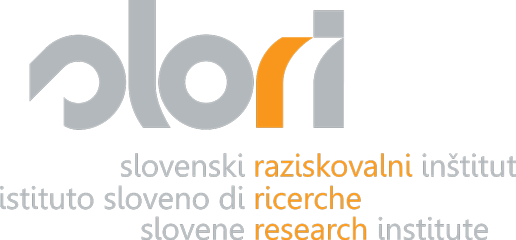A targeted research project funded by the Slovenian Research Agency (ARRS)
Project promoter: Inštitut za narodnostna vprašanja (INV)
Partners: Slovenski raziskovalni inštitut (SLORI), Filozofska fakulteta Univerze v Ljubljani (FF UL) in Inštitut za slovenski jezik Frana Ramovša ZRC SAZU
Manager of the project: dr. Sonja Novak Lukanovič
Responsibles for SLORI: dr. Maja Mezgec and dr. Devan Jagodic
Project implementation period: 2016-2017
The research project will cover the Province of Udine (Italy), the Raba Valley (Hungary), and the Međimurje and Varaždin counties (Croatia). In all these regions the status of the Slovene community and the Slovene language is marked by the historical situation and current social context. The linguistic status of the Slovenian minority in the Province of Udine is much different to those in the provinces of Trieste and Gorizia. In the Province of Udine, Slovene is seldom used in public, bilingual signs are rare, and the Italian education system does not intend to include Slovene in its curriculum, in spite of several exceptions in majority schools. In the Raba Valley, a major percentage of Slovenes do not speak Slovene anymore, and the intergenerational transmission of Slovene is scarcely present. Meanwhile, there have not been any studies on language skill and use in the Varaždin and Međimurje counties. Due to a serious decline in the number of Slovenes, which is most probably a consequence of assimilation, the Slovenian community in the Varaždin County developed an effective framework and succeeded in introducing the instruction of Slovene in public schools. A similar initiative is taking place in the Međimurje County, and this calls for efforts for promoting the instruction of Slovene in schools and for following up parents’ views on Slovene.
The project will underline another important aspect, namely the role and meaning of regional dialects in relation to Standard Slovene. There are different language identifications in regions with minorities, with Standard Slovene (Slovene Literary Language) representing only one of the strata of linguistic identification on the standard/literary language‐dialect axis.
The aim of the project is to determine the meaning and methods of preserving Slovene in Slovenian communities in actual microenvironments (the Province of Udine, the Raba Valley, and the Međimurje and Varaždin counties), with emphasis on studying the meaning and methods of teaching Slovene within the system of formal education.
